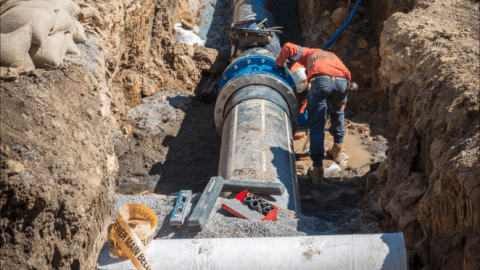As power generation sources become increasingly distributed and intermittent, balancing supply and demand requires a more agile and intelligent grid. This is now possible thanks to significant advances in grid automation technology in recent years, including the development of digital substations. Zinfra, which provides a comprehensive range of engineering, project management, construction, operations and maintenance services to the electricity and gas industries, partnered with the major Australian distribution network operator, Jemena, to deliver its first digital substation as part of the Preston Zone Substation rebuild.
The Preston Zone Substation rebuild was part of a larger program of work to convert the Preston distribution network – which has operated since the 1920s with a primary voltage level of 6.6kV through the Preston and East Preston Zone Substations – to 22kV, matching the surrounding zone substations at Coburg North, Coburg South and North Heidelberg.
The decommissioning of the old zone substation, which had reached the end of its life, and establishment of a new 22kV zone substation at Preston, leaves the East Preston Zone Substation as one of the last two remaining 6.6kV zone substations in Jemena’s network.
For Jemena, the rebuild has improved network reliability and ensures long-term demand for electricity in the area can be met, while supporting growth in the wider Preston area by reducing the cost and complexity of connection for new residences and businesses.
The new Preston Zone Substation is a ‘smart’ substation and is a further step in implementation of the international industry standard IEC61850 in the Jemena electricity network. It utilises both station bus and process bus technologies.
A smart substation is a key component in enabling a smart grid. Digital communications are achieved by replacing traditional copper connections using analog signals with fiber optic cables, and integrated digital protection and control systems – Intelligent Electronic Devices (IEDs) – enable improved system visibility, diagnostics and operation.
Overcoming challenges through a flexible and collaborative approach
Zinfra was engaged to demolish the existing zone substation and ‘design and construct’ the new substation. The design component included the complete civil and primary installation of the primary electrical equipment – such as switches, circuit breakers and transformers.
Jemena partnered with a reputable overseas design house, Shanghai Electric Power Design Institute (SEPD), a Chinese multinational power generation and electrical equipment manufacturer which was tasked with collaborating and working with Zinfra on the design of the secondary systems and procurement of equipment. Five vendors were selected to provide IEDs for the secondary systems – Siemens, ABB, General Electric, NR Electric and Schweitzer Engineering Laboratories (SEL).
The biggest challenge came from working across multiple continents to deliver the design for the secondary systems, and the logistics of procuring the different pieces of equipment from the various vendors around the world. This involved having everything delivered to Melbourne and then shipping it all to China so that SEPD could assemble and commence Factory Acceptance Testing.
A delegation of Zinfra and Jemena engineers travelled to China for two weeks to perform the Factory Acceptance Testing, troubleshoot any issues and ensure the equipment was optimised to Australian standard designs and working conditions. Once assembled, the panels were sent back to Melbourne to be installed and commissioned by Zinfra personnel.
Despite the logistical challenges involved, Garry Smith, Project Manager at Zinfra, said that the collaboration with SEPD had provided an opportunity for Zinfra to develop and expand its commissioning expertise.
“We started designing the substation at the beginning of 2018, with an initial commissioning date of November that year. Unfortunately, the procurement process for the secondary equipment really stretched out the timeline for the project, and the substation was commissioned in March 2020,” Mr Smith said
“The project had significant challenges along the way, but we are committed to building genuine partnerships to deliver successful outcomes for our clients. As a result of this thorough procurement process, we feel that we have gained a really unique skill set within the commissioning team, who tend to be the quiet achievers of the project world.”
Leading the way in the development of a modern, digital grid
Zinfra has been steadily building its experience and capabilities in the area of IEC61850 standard for a number of years now.
In 2015, the organisation partnered with ABB to design, construct and commission two greenfield zone substations in the Victorian suburbs of Broadmeadows South and Tullamarine, also part of the Jemena network.
According to Mr Smith, there are two main levels within the IEC61850 standard:
“At station bus level, the standard enables the IEDs to communicate with each other and to the station gateway within the control room – this has been around for a while,” Mr Smith said.
“Process bus level refers to the primary equipment, and using the standard, you can digitise the signals out in the switchyard and enable communication with the smart IEDs in the control room.”
The two substations constructed in 2015 incorporate the IEC61850 standard at station bus level, but the Preston Zone Substation takes advantage of the benefits offered by the full standard at both station and process bus levels.
Greenfield substations are the easiest when it comes to implementing the IEC61850 standard – a brand new asset doesn’t have the added complication of integrating digital technologies with legacy systems. Jemena is looking at opportunistically incorporating more smart substations across its network.
“Energy networks across the world are transitioning from what used to be the flow of power in one direction to two-way flows of power that incorporate embedded generation and Distributed Energy Resources. The loads are much more dynamic, and digital technologies are key in enabling smart grids that allow for two-way communication between utilities and their customers,” Mr Smith said.
This partner content is brought to you by Zinfra – your trusted partner in energy. For more information on Zinfra’s engineering, construction and maintenance services, visit www.zinfra.com.au.
















